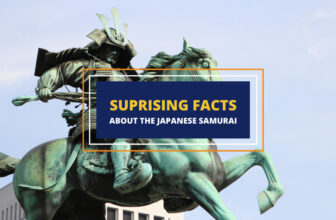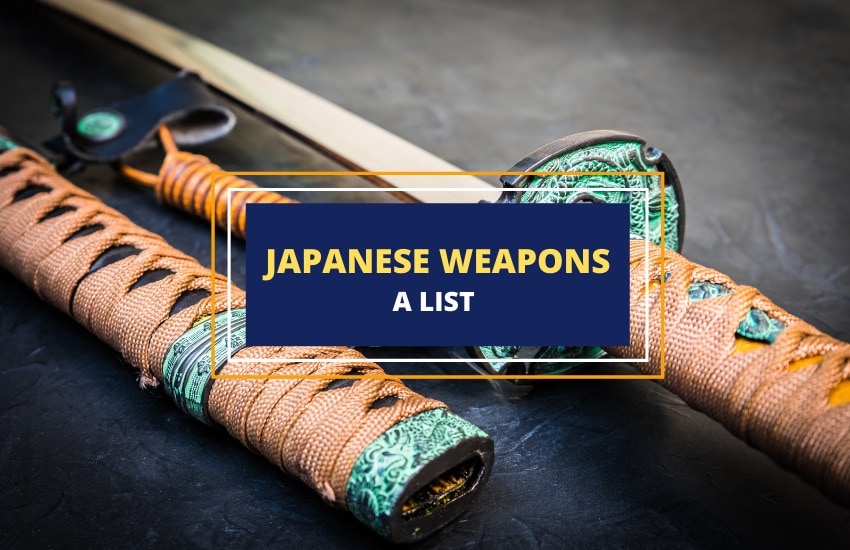
Table of Contents
Japan’s warriors are known for their loyalty, strength, power, and code of conduct. They’re also known for the weapons that they carried – typically, the katana sword, featuring an elegantly curved blade.
But while these swords are among the most famous weapons to have come out of Japan, there are many more weapons that were used by early Japanese fighters. This article will cover some of the most interesting ancient Japanese weapons.
A Brief Timeline
In Japan, the earliest weapons originated as tools for hunting, and were commonly made from stone, copper, bronze, or iron. During the Jomon period, the earliest historical era of Japan, which coincides with the Neolithic, Bronze, and Iron Ages in Europe and Asia, stone spearheads, axes, and clubs were used. Wooden bows and arrows were also found in Jomon sites, along with stone arrowheads.
By the time of the Yayoi period, around 300 BC to 250 AD, iron arrowheads, knives, and bronze swords were used. It was only during the Kofun period that the earliest steel swords were crafted, designed for battles. While today we associate the Japanese swords with the samurai, the warriors from this period were military elites of early clan groups and not samurai. The swords also held religious and mystical significance, derived from the beliefs in kami of Shinto, Japan’s native religion.
By the 10th century, samurai warriors became known as the Japanese emperor’s guards. While they’re known for their katana (sword), they were primarily horse archers, as the art of Japanese sword making only evolved in the late medieval ages.
List of Ancient Japanese Weapons
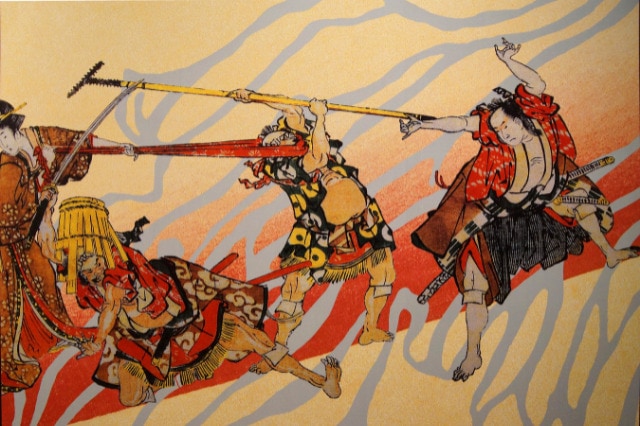
1- Bronze Sword
The earliest recorded histories of Japan come from two books – the Nihon Shoki (Chronicles of Japan) and the Kojiki (Record of Ancient Matters). These books narrate myths about the magical power of swords. Even though the Yayoi people used iron tools for farming, the swords of the Yayoi period were made of bronze. However, these bronze swords had religious significance and weren’t used for warfare.
2- Tsurugi
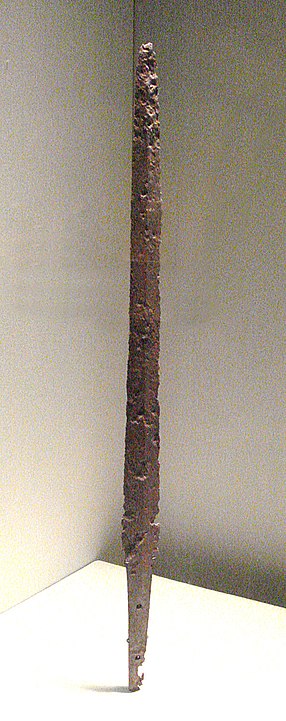
Sometimes called a ken, the tsurugi is a straight, double-edged steel sword of ancient Chinese design, and was used in Japan from the 3rd to the 6th centuries. However, it was eventually replaced by the chokuto, a type of sword from which all other Japanese swords developed.
The tsurugi is one of the oldest sword types, but it remains relevant due to its symbolic significance. In fact, has been incorporated into Shinto ceremonies and holds particular importance in Buddhism.
It’s said that Shinto attributed kami or god to the sword, inspiring the modern day ritual where priests make a harai movement, based on the cutting motions of the weapon.
3- Chokuto
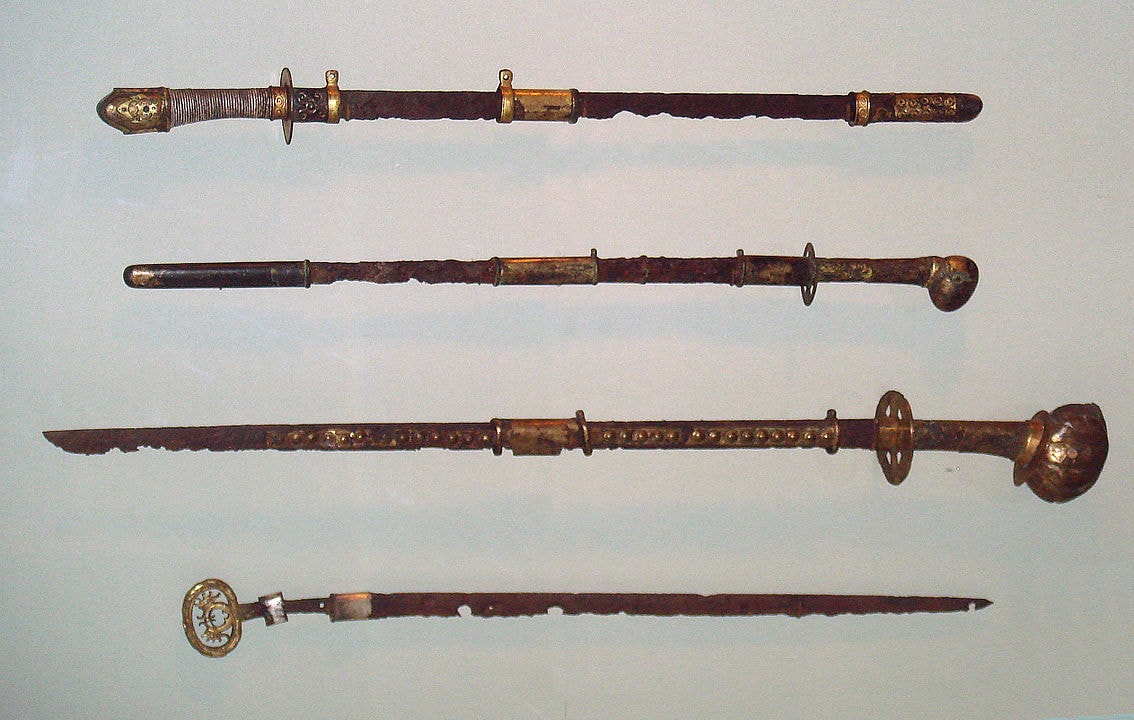
Straight, single-edged swords, the chokuto (“straight sword”) are considered to predate the so-called Japanese sword, since they don’t have the Japanese characteristics that would develop later. They’re of Chinese design yet were produced in Japan in ancient times.
The two popular designs were the kiriha-zukuri and the hira-zukuri. The former was more suited to hacking and thrusting, while the latter had a slight advantage in slicing due to its tip design. Some scholars speculate that the two designs were later merged to create the first tachi, or swords with curved blades.
In the Kofun period, around 250 to 538 CE, the chokuto were used as weapons for warfare. By the time of the Nara period, swords with water dragons inlaid on the blade was called Suiryuken, meaning Water Dragon Sword. They continued to be used in the Heian period, from 794 to 1185 CE.
4- Tachi (Long Sword)
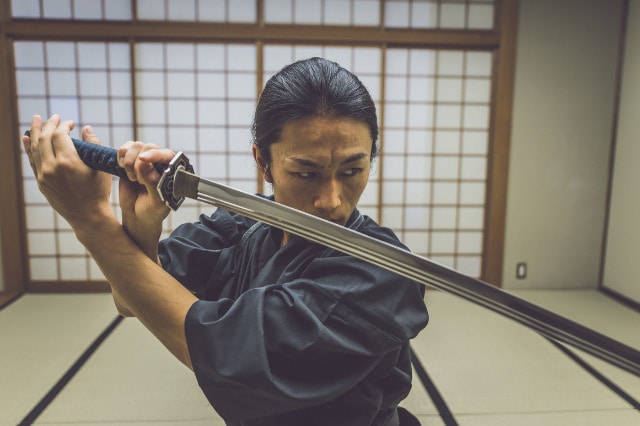
During the Heian period, swordsmiths began leaning towards a curved blade, which slashes more easily. Unlike the straight and bulky design of the tsurugi, the tachi were single-edged swords with a curved blade. They were used for slashing rather than thrusting, and were designed to be held with one hand, usually while on horseback. The tachi is also regarded as the first functional sword of truly Japanese design.
The tachi were initially influenced by blades from the Han dynasty in China, but eventually had the shape of swords from the Korean Peninsula. Usually made of iron, copper, or gold, the Kofun-period tachi featured the decoration of a dragon or phoenix and were called the kanto tachi. The tachi of the Asuka and Nara periods are considered to have been made in China, and were among the finest swords at the time.
5- Hoko (Spear)
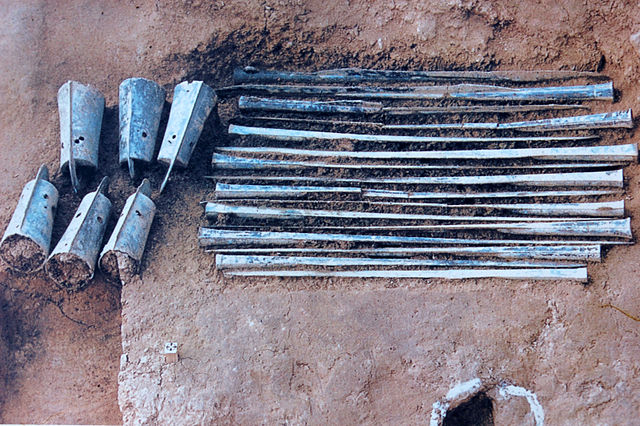
Used from Yayoi times to the end of Heian period, the hoko were straight spears used as stabbing weapons. Some had flat, double-edged blades, while others resembled halberds.
It’s believed that the hoko was an adaptation of a Chinese weapon, and later evolved into the naginata. They were also used for displaying the heads of slain enemies, which were pierced to the end of the weapon and paraded through the capital.
6- Tosu (Pen Knives)
In the Nara period, aristocrats wore tosu, or small penknives, to show their status. The tosu were an early Japanese weapon equivalent to the pocket utility knife. Sometimes, several knives and small tools were bound together, and fastened to the belt via small strings.
7- Yumi and Ya (Bow and Arrows)
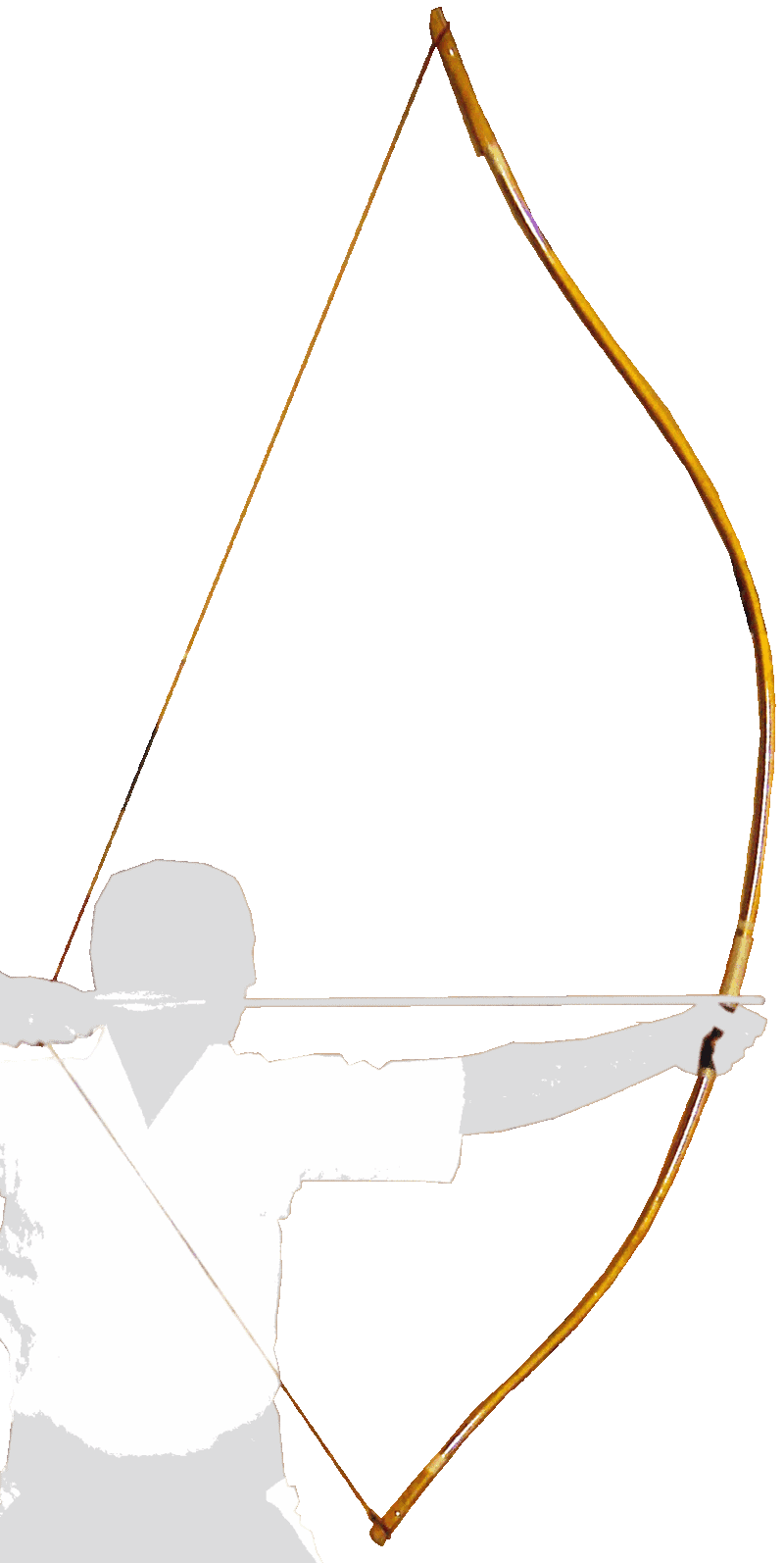
Contrary to popular belief, the sword was generally not the first weapon of choice for the samurai on a battlefield. Rather, it was the bow and arrows. During the Heian and Kamakura periods, there was a saying that the samurai was the one who carries a bow. Their bow was the yumi, the Japanese longbow, which had a different shape and construction from the bows of other cultures.
The yumi and ya allowed some distance between soldiers and enemies, so the sword was only used during the final stages of battle. The method of combat of the time was to shoot arrows while on horseback.
8- Naginata (Polearm)
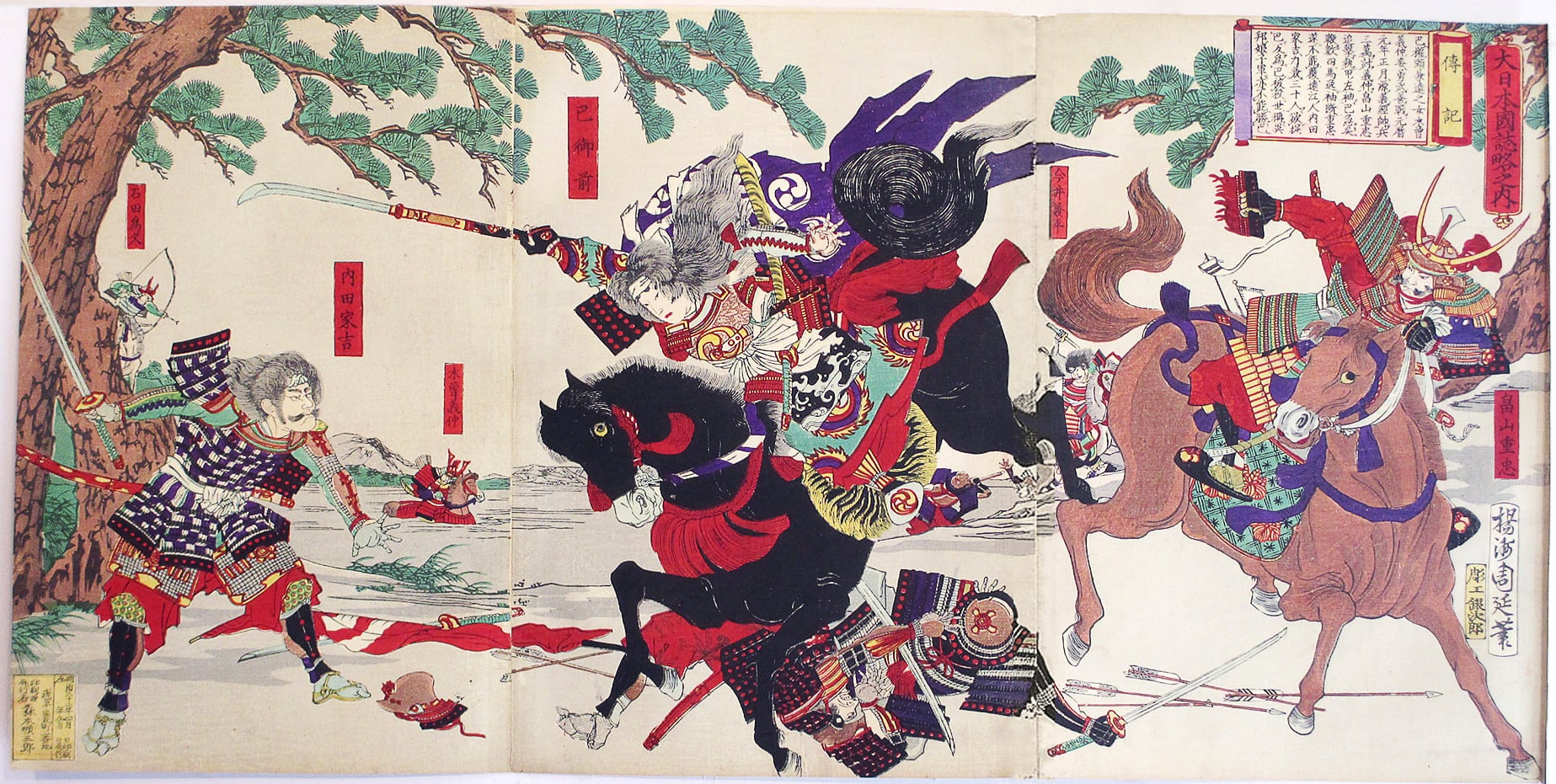
During the Heian period, naginata were used by lower-class samurai. The term naginata is traditionally translated as halberd, but it’s in fact closer to a glaive in Western terminology. Sometimes called the pole-sword, it’s a polearm with a curved blade, about two feet long. It was also often longer than the European halberd.
The naginata was designed to maximize the warrior’s ability to deal with multiple enemies at once. In fact, it can be used to sweep and cut the enemy down and could be twirled like a baton. The Taiheiki Emaki, a book of pictorial scrolls, depicts warriors armed with naginata in a battle scene, with some depictions portraying the weapon spinning like a water wheel. This was also the main weapon of foot soldiers, along with bows and arrows.
In 1274, the Mongol army attacked Iki and Tsushima in western Japan. There were large numbers of swords made for the high-class samurai to take into battle. It’s believed that some of the naginata were intended for divine supplication in Shinto shrines and Buddhist temples. By the Edo period, from 1603 to 1867, the use of the naginata inspired a form of martial arts, known as the naginata jutsu.
9- Odachi, a.k.a. Nodachi (Great Tachi)
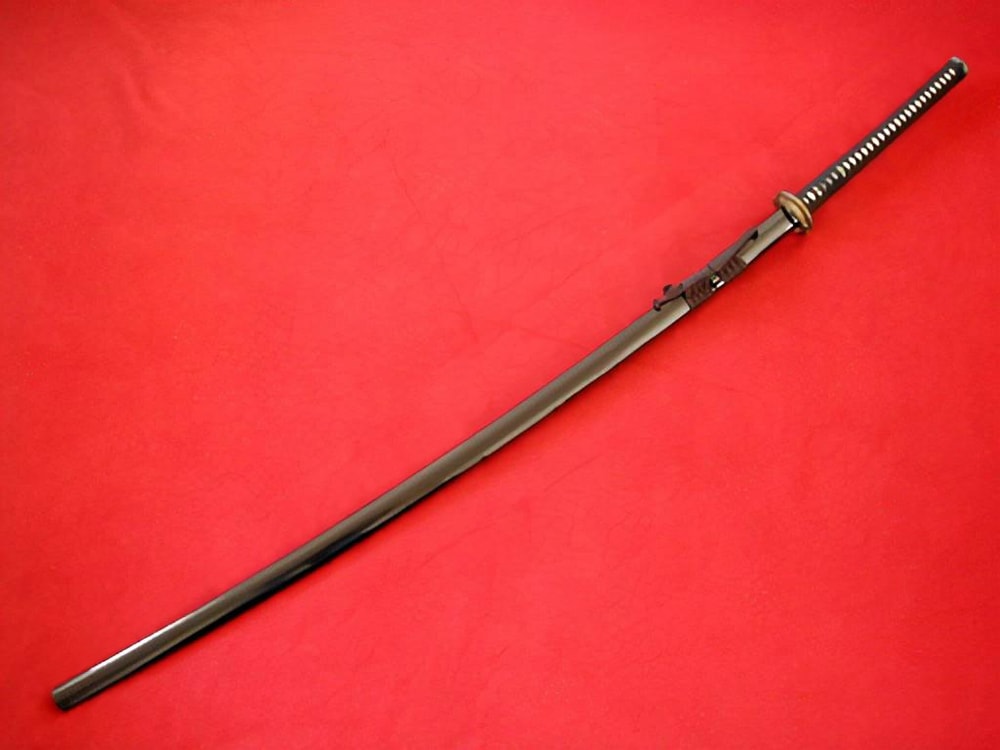
By the time of the Nanbokucho period from 1336 to 1392, extremely long swords known as odachi were being used by Japanese warriors. Usually between 90 and 130 centimeters in length, they were carried across the fighter’s back.
However, they were difficult to handle and were only used during this period. The succeeding Muromachi era favored the average sword length of the Heian and Kamakura periods, around 75 to 80 centimeters.
10- Yari (Spear)
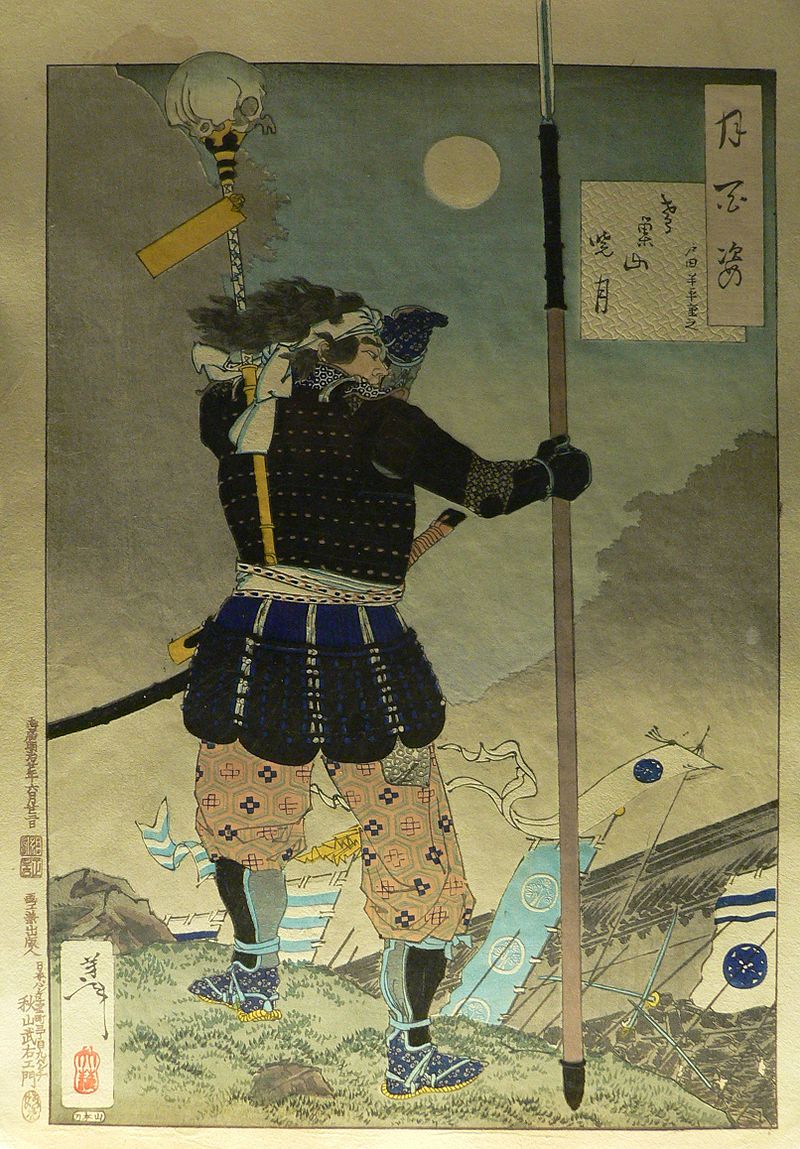
During the Muromachi period, yari or thrusting spears were the main offensive weapons of choice, along with long swords. By the 15th and 16th centuries, the yari replaced the naginata.
It was widely used during the Sengoku Period (Warring States Period) from 1467 to 1568. Later in the Edo period, it became an emblem of samurai status, as well as ceremonial weapon of high-ranking warriors.
11- Uchigatana or Katana
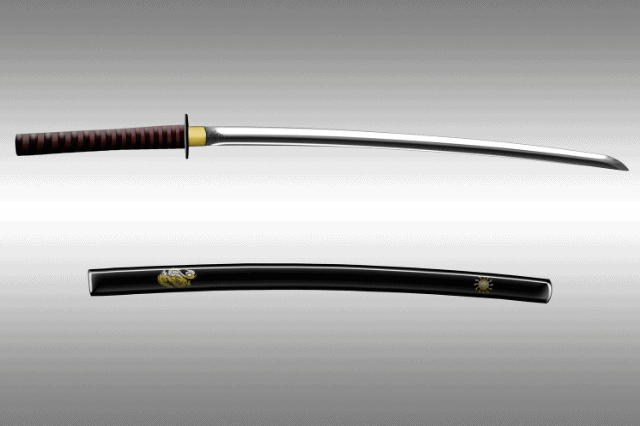
After the Mongolian invasion during the Kamakura period, the Japanese sword underwent significant changes. Like the tachi, the katana is also curved and single-edged. However, it was worn with the edge facing up, tucked in the belts of the warrior, which allowed the sword to be carried comfortably without armor. In fact, it could be drawn and immediately used to make offensive or defensive motions.
Due to its ease of use and flexibility in battle, the katana became the standard weapon for warriors. In fact, it was only worn by samurai, both as a weapon and as a symbol. Swordsmiths also began carving talisman designs or horimono on the swords.
By the Momoyama period, katana replaced the tachi because it was easier to use on foot with other weapons like spears or firearms. Most Japanese blades were designed to be removable from the rest of the sword, so the same blade could be passed down for generations as a family heirloom. It’s also said that some of the blades that were originally made as a tachi were later cut down and remounted as katana.
12- Wakizashi (Short Sword)
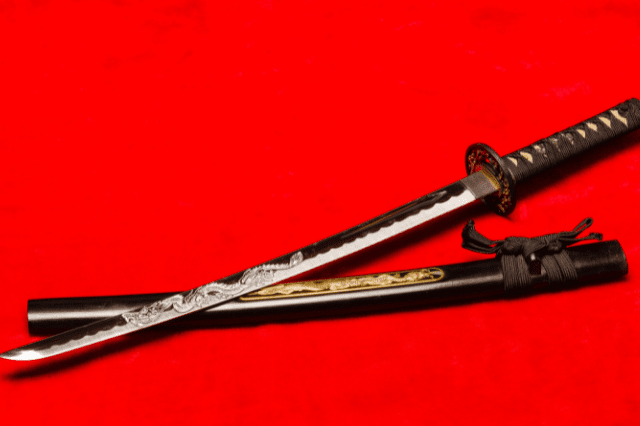
Designed to be worn the same way as the katana, the wakizashi is a short sword. By the 16th century, it was common for samurai to wear two swords—one long and one short—through the belt. The daisho set, consisting of katana and wakizashi, was formalized during the Edo period.
In some cases, a warrior would be asked to leave his sword at the door when visiting other households, so the wakizashi would accompany him as his source of protection. It was also the only sword allowed to be worn by other social groups and not just the samurai.
As the peace of the Edo period continued into the 18th century, the demand for swords fell. Instead of a practical weapon, the sword became a symbolic treasure. With no frequent battles to fight, the Edo samurai preferred ornamental carvings rather than the religious horimono on their blades.
At the end of the period, the days of warriors wearing armor came to an end. In 1876, the decree of Haitorei prohibited the wearing of swords in public, which ended the use of swords as practical weapons, as well as of the traditional samurai way of life, and their privilege in Japanese society.
13- Tanto (Dagger)
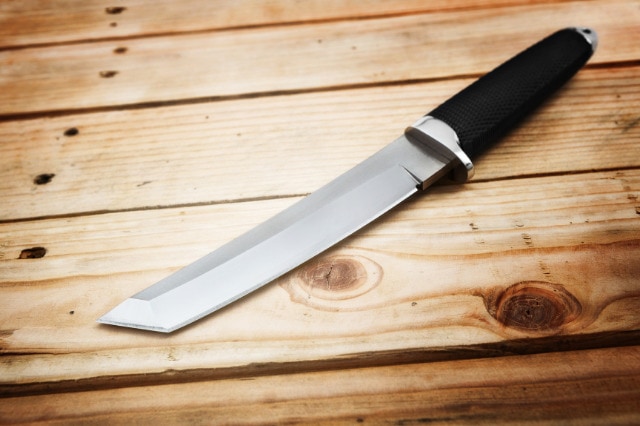
The tanto is a very short sword, generally less than 30 centimeters, and is regarded as a dagger. Unlike the wakizashi, the tanto usually has no sheath. They were reportedly carried by ninja who disguised to be Buddhist monks.
The tanto was used for self-defense and close-quarter combat, as well as a protective charm. Due to its spiritual significance, it was presented to newborn babies and worn by Japanese brides. In the Edo period, the tanto became the focus of the tantojutsu form of martial arts.
Wrapping Up
Japan’s history of weapons is colorful and rich. Many weapons would go on to establish various forms of martial arts, and while some were created to be used by all classes of society, certain weapons, like the katana, were prestigious badges of ranks and were designed to cut a foe down as efficiently as possible.





